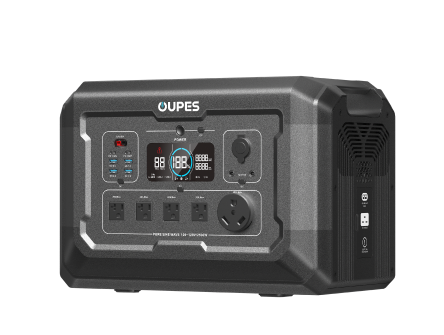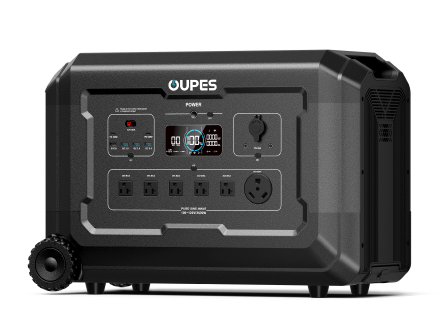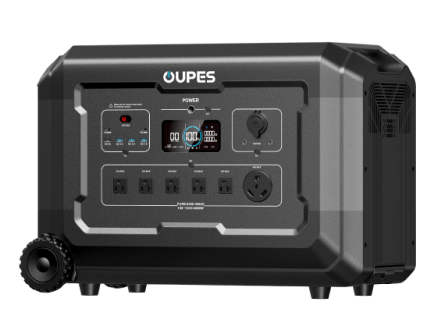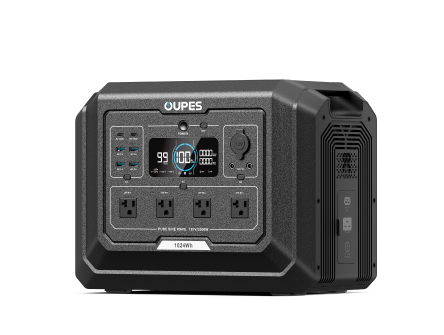
In the age of portable power solutions, flexibility is everything. Whether you're camping in the wild or preparing for an unexpected power outage at home, having access to reliable, continuous energy is no longer a luxury—it’s a necessity. One of the most common questions among users is whether a portable power station can be used while it's charging. The answer isn’t just a simple yes or no—it involves a closer look at pass-through charging, power management, and long-term battery health. In this article, we’ll explore everything you need to know about using your portable power station while it’s plugged in.
Understanding Pass-Through Charging: What It Is and How It Works
Pass-through charging is the ability of a portable power station to simultaneously receive and deliver power. In practical terms, this means you can charge the battery from an AC wall outlet, solar panel, or car socket, while at the same time using the power station to run devices like laptops, mini-fridges, or medical equipment.
Not all portable power stations support pass-through charging, and even among those that do, the performance and safety measures can vary significantly. High-quality models, like those offered by OUPES, come equipped with intelligent battery management systems (BMS) that regulate charging and discharging processes to prevent overheating, overcharging, and excessive wear on the battery cells.
It’s essential to understand the internal structure of a power station when considering pass-through charging. These devices contain lithium-ion or LiFePO4 battery packs managed by circuitry designed to control current flow. When pass-through charging is enabled, the BMS must balance incoming and outgoing energy without compromising the battery's integrity or efficiency.
In some budget models, pass-through charging may lead to battery degradation over time or may not function reliably under high loads. That’s why users should verify this feature with the manufacturer and read product manuals before assuming dual use is safe. Brands that prioritize durability and safety, such as OUPES, make this information transparent to users.
Benefits and Limitations of Using While Charging
Being able to use your portable power station while charging offers enormous practical advantages. First and foremost, it ensures continuity. For example, during a prolonged power outage, you can connect the station to solar panels for charging during the day and continue using it to run essential appliances simultaneously. This minimizes downtime and maximizes productivity or comfort during emergencies.
Another benefit is reduced stress on the battery. Some advanced systems allow incoming power to bypass the battery and go straight to the output, especially under low-load conditions. This bypass can extend battery life and reduce heat generation, which is a common concern during simultaneous operation.
However, this convenience comes with certain limitations. The combined input and output load must remain within the device's capacity. For instance, if your power station supports 500W input and 1,000W output, drawing 1,000W while charging at maximum input may cause overheating or force the unit to shut down. Always stay within the device’s power envelope to avoid performance issues.
Moreover, the efficiency of pass-through charging can vary depending on the input method. Charging via solar panels may provide insufficient wattage on cloudy days, which could compromise simultaneous operation. Users must also consider environmental conditions, especially for outdoor usage, where moisture, dust, and temperature fluctuations can impact safety and efficiency.
Battery Health and Longevity Considerations
Frequent use of pass-through charging can, over time, affect the longevity of your portable power station. Lithium-ion batteries, while efficient, have a finite charge cycle lifespan. Every time you charge and discharge, you inch closer to the end of the battery’s useful life. Using a device while charging accelerates this process slightly, depending on how the battery management system handles the current flow.
To mitigate wear and tear, it’s wise to follow best practices. First, avoid using the power station while it’s charging at full capacity. For example, instead of running high-wattage appliances like a microwave or portable air conditioner during charging, limit usage to smaller devices like LED lights or phone chargers. This reduces thermal load and current stress on internal components.
Second, maintain your unit in a well-ventilated area. Excess heat is one of the top contributors to battery degradation. If your power station features built-in cooling fans, ensure that ventilation inlets are unobstructed. It’s also helpful to monitor temperatures during use—some advanced models like OUPES provide app-based interfaces or digital displays to help users keep tabs on system health in real-time.
Finally, apply charging best practices. Charge the power station at moderate input levels where possible, avoid complete battery discharge before recharging, and follow seasonal storage guidelines—like keeping the battery at 50% charge during long-term storage. These habits contribute to extended battery life even when using your station in pass-through mode.
Ideal Scenarios for Dual Use and Practical Recommendations
There are specific situations where using a portable power station while charging is not just convenient but almost necessary. One of the most common examples is during a camping trip or RV adventure, where solar charging during the day must power essential items like lights, fans, or portable stoves at the same time.
Another scenario is during grid outages. Homeowners may use their power station to run sump pumps, medical devices, or communication tools while also topping up the battery from a generator or solar array. In such emergencies, time and efficiency are critical, and pass-through functionality ensures you never have to choose between charging and powering a device.
When choosing a power station for these tasks, prioritize models with robust BMS, adequate input/output wattage, and thermal protection. OUPES power stations, for instance, are designed with high-capacity lithium iron phosphate batteries and integrated protection systems that ensure safe, stable performance even during simultaneous operation. Their intuitive interface makes managing energy flows easier, reducing the risk of overloading or inefficient use.
For businesses, event organizers, or digital nomads, this feature is equally important. Being able to charge the power station from a wall socket while simultaneously powering AV equipment, charging drones, or running laptops ensures uninterrupted workflows. It’s the kind of flexibility that adds tremendous value in dynamic environments.
How OUPES Ensures Safe and Efficient Use While Charging
OUPES portable power stations stand out for their advanced engineering and attention to user safety. Their units are equipped with intelligent pass-through charging that not only allows simultaneous operation but also optimizes energy routing to preserve battery health. The smart Battery Management System monitors voltage, temperature, and current in real-time to prevent damage and ensure consistent performance.
For instance, if you’re using a 1,200W appliance while charging the station with a 400W solar panel, the OUPES system will intelligently balance the energy input/output without straining the battery. If the load temporarily exceeds safe thresholds, the system initiates protective shutdown or redistributes energy flows accordingly. This responsiveness is key for long-term reliability.
OUPES also uses high-grade LiFePO4 battery chemistry, which is inherently more stable than traditional lithium-ion cells. These batteries support thousands of cycles with minimal degradation, even under pass-through conditions. Combined with rugged design, fire-retardant casing, and surge protection, OUPES products are well-suited for home backup, outdoor adventures, and emergency preparedness.
Additionally, user-friendly displays and companion apps (available for select models) make it easy to monitor input/output levels, battery status, and system temperatures. These tools empower users to make informed decisions while using the power station in dual mode. If you’re looking for peace of mind and versatility, investing in a model designed for real-world conditions makes all the difference.
Conclusion: Balancing Convenience, Safety, and Longevity
Using a portable power station while it’s charging can be a game-changer—offering continuous power, flexibility in various scenarios, and greater energy efficiency. However, it requires an understanding of how the system works and adherence to best practices to ensure safety and battery longevity.
High-quality power stations like those from OUPES are engineered to support pass-through charging without compromising performance. By following usage guidelines, monitoring load conditions, and maintaining your unit properly, you can safely enjoy dual-functionality for years to come. Whether you're off-grid, at home, or on the move, the ability to use and charge your power station simultaneously adds a layer of reliability that modern life increasingly demands.




























